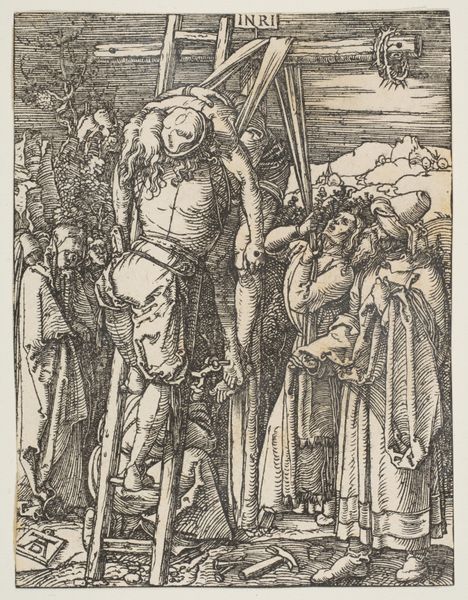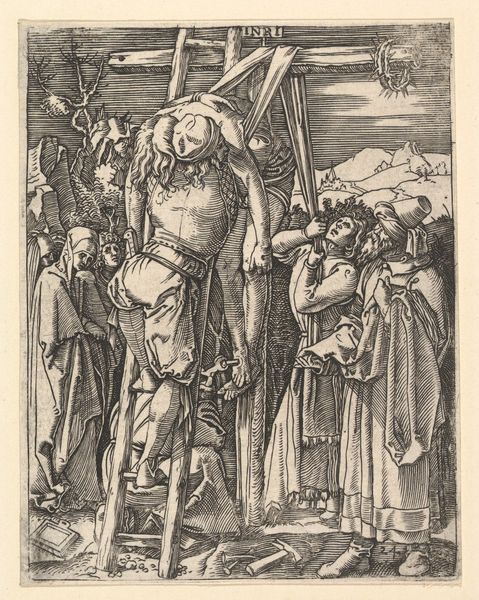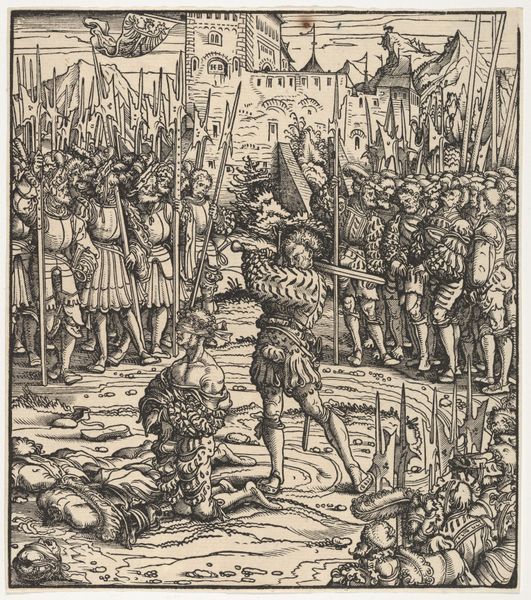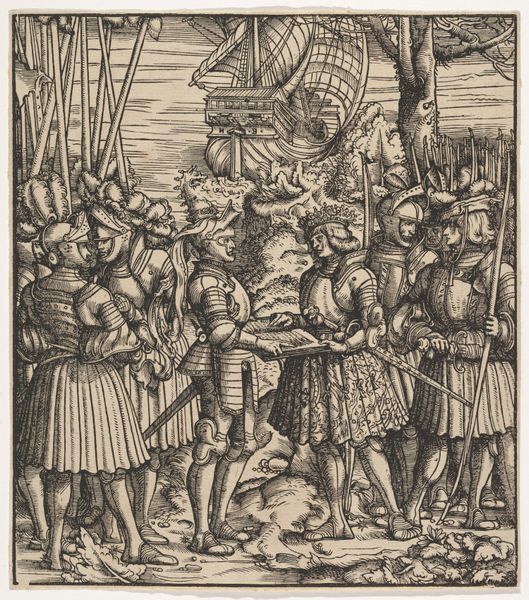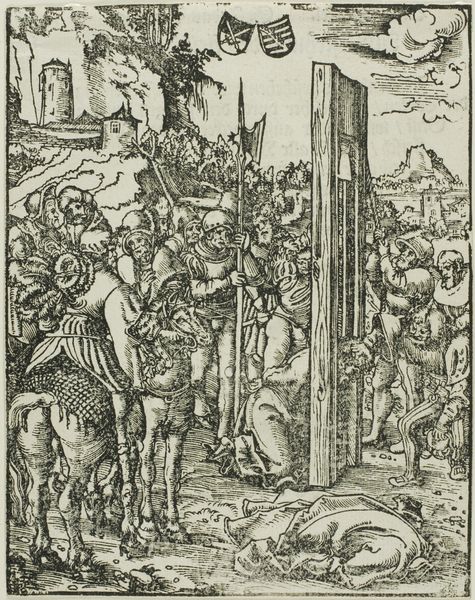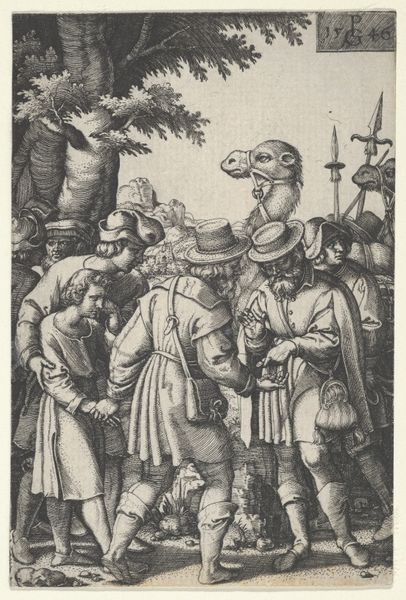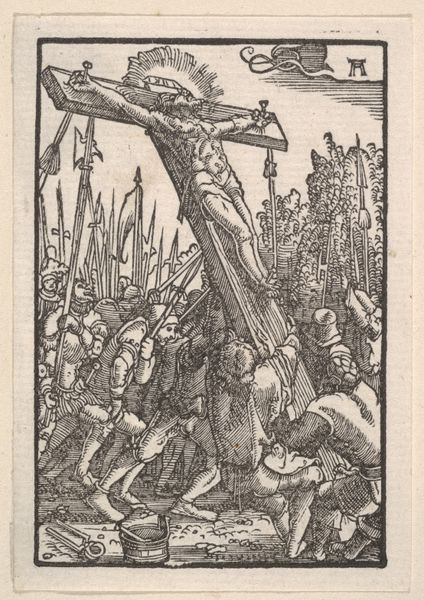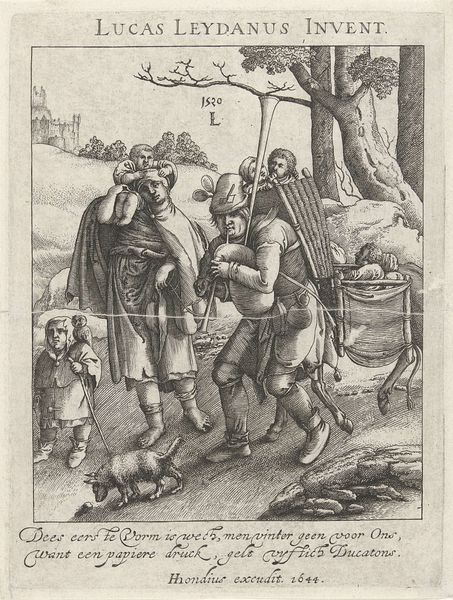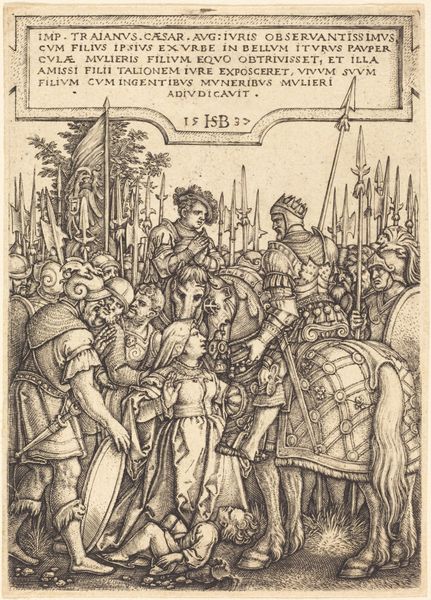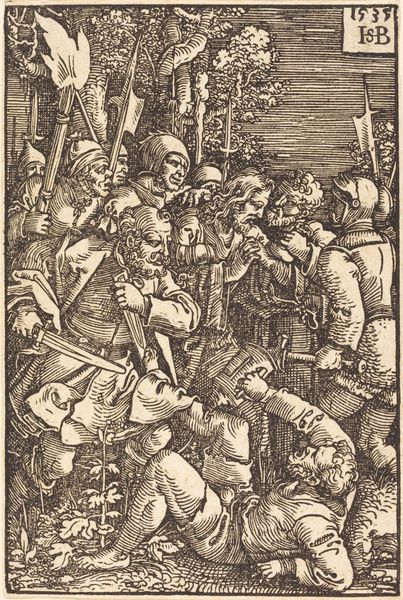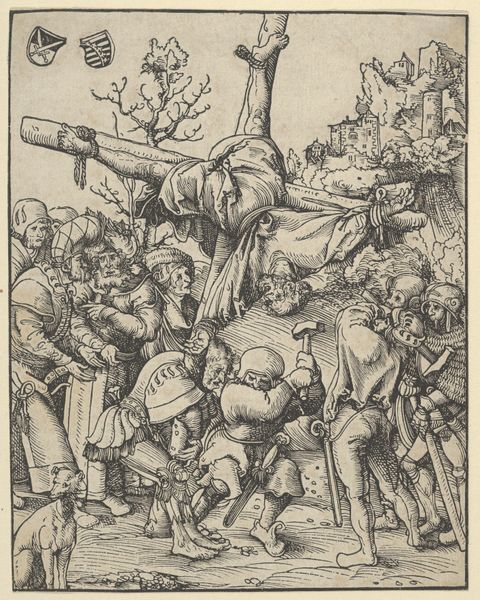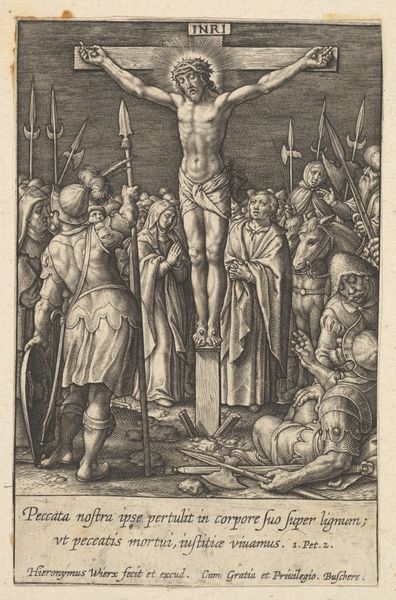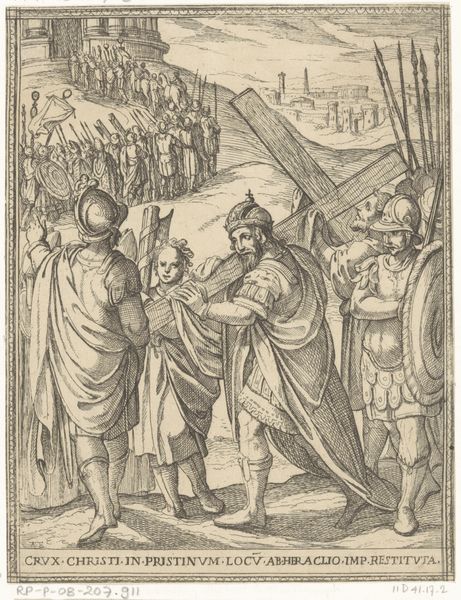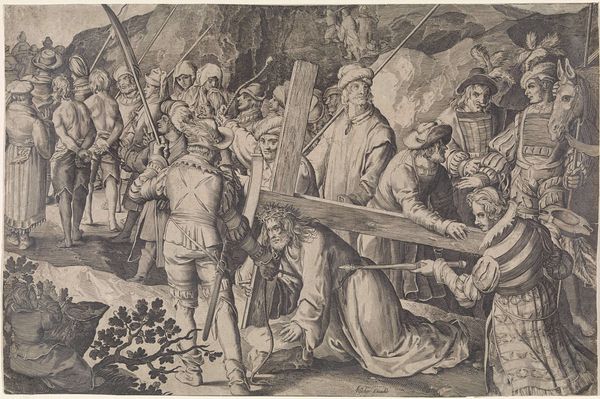
The Skill of the White King Dealing with Different Nations in Wartime, from Der Weisskunig 1514 - 1600
0:00
0:00
drawing, print, woodcut, engraving
#
drawing
#
medieval
#
narrative-art
#
pen drawing
# print
#
figuration
#
soldier
#
woodcut
#
history-painting
#
northern-renaissance
#
engraving
#
sword
Dimensions: Sheet: 8 11/16 × 7 7/8 in. (22.1 × 20 cm)
Copyright: Public Domain
Editor: Here we have "The Skill of the White King Dealing with Different Nations in Wartime, from Der Weisskunig" created between 1514 and 1600, by Hans Burgkmair. It looks like a pen drawing, maybe also a woodcut. The figures are intensely detailed; it feels so historically rich. What’s your read on this work, in terms of its social significance? Curator: It's interesting to see this print viewed as a drawing first. Its societal function is intricately tied to the political ambitions of the Holy Roman Emperor Maximilian I. "Der Weisskunig" was designed as a glorification project, intended to cast Maximilian as the ideal ruler, and prints were central to disseminating this carefully crafted image. Notice how these are not specific portraits, but idealised types and general scenes, intended for a broad audience, with accessibility in mind. How might the choice of a repeatable medium, like printmaking, alter the reception of the ‘White King’? Editor: I didn’t consider the impact of it being reproducible! So, the medium itself reinforces the message of power. Does the style--those rigid, almost doll-like figures--also contribute to that impression? Curator: Absolutely. The figures reflect the Northern Renaissance interest in detail and narrative, but within the context of imperial propaganda, this meticulousness takes on new meaning. Every piece of armor, every gesture, contributes to the story of Maximilian's wisdom and skill, controlling public perception. Does knowing it was intended to shape opinions affect your experience of viewing the piece? Editor: It changes everything! I see how even seemingly objective details—like the attire of the soldiers--served the agenda. So much for passive observation. Curator: Exactly. We must be attentive to the political and cultural contexts that shape what we see and how we understand art’s role. It is always part of the discourse! Editor: That's such a powerful lesson. Thanks! I’ll definitely view art with a much more critical eye from now on.
Comments
No comments
Be the first to comment and join the conversation on the ultimate creative platform.
